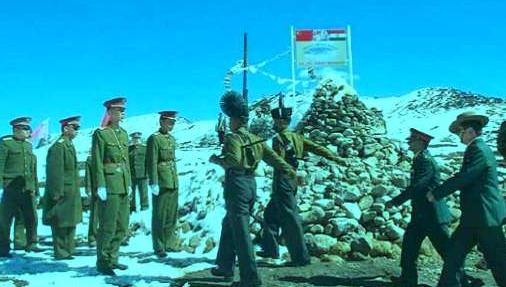China Mobilizes PLA Troops at Bhutan Border despite Tension
By :
Notice: Trying to get property 'fName' of non-object in /home/u589520015/domains/observerdawn.com/public_html/module/Application/view/application/index/news.phtml on line 23
Notice: Trying to get property 'lName' of non-object in /home/u589520015/domains/observerdawn.com/public_html/module/Application/view/application/index/news.phtml on line 23

While
China has deployed its troops on the Line of Actual Control (LAC) with the
intention of capturing the Indian territories in Ladakh, The People's
Liberation Army (PLA) has been also eying to occupy some part of Bhutanese
territories. As per the officials who are aware of the latest developments
alerted Bhutan government about Chinese plot at the highest level.
Since the Doklam dispute in 2017, China
has been preparing roads, helipads and troops near the Bhutan border. In the
last few months, China has infiltrated five areas of Western Bhutani
territories and claimed a new boundary approximately 40 kilometer inside
Bhutan. Sources from security and intelligence department of the Indian Army said,
“We are keeping close eyes on the latest developments at the Indo-China and
China-Bhutan border. Since Doklam standoff, PLA is aggressively patrolling at
Bhutan-China border and constructing roads, military infrastructure and
helipads close to Bhutan border”. China claims 318 square kilometers in the
western sector and 495 square kilometers in the central sector. In a surprise
move, China recently staked claim over the Sakteng Wildlife Sanctuary in Bhutan
at the Global Environment Facility (GEF) Council and opposed funding to the
project. Sakteng Wildlife Sanctuary is located in the eastern most part of the
country in Trashigang Dzongkhag, Eastern Bhutan, bordering the Indian state of
Arunachal Pradesh.
The boundary dispute between China and
Bhutan led to the military standoff that took place in 2017.Doklam Plateau is
close to Siliguri Corridor, which is also referred as the ‘chicken's neck’, the
Siliguri Corridor represents a strategic vulnerability for India. It is also of
key strategic significance to Bhutan, containing the main supply routes into
the country. Chinese claim on the Doklam plateau rests on the 1890 Convention
between Great Britain and the Qing dynasty represented by its Resident in
Tibet. The Chinese claim that Gipmochi (Gymochen)—mentioned in Article I of the
1890 Convention as the eastern extremity of the Sikkim-Tibet boundary—should
automatically is the tri-junction.
As per Srinath Raghavan, a senior person
at the Centre for Policy Research, New Delhi, “The boundary of the Sikkim and Tibet
shall be the crest of the mountain range separating the Waters flowing into
Sikkim Teesta and its effluents from the waters flowing into the Tibetan Mochu
and northwards into other rivers of Tibet”. The archival documents also suggest
that the discussion about the control of Gipmochi hill was between Sikkim and
Bhutan. China was not the party in the border talk. “19th century British
travel maps show the boundary alignment as Batang la-Merug la-Sinche la and
onto Amochu river, which would make Batang la the tri-junction, as contended by
Bhutan and India. This is in accordance with the internationally accepted
highest watershed principle of boundary demarcation. In some of these maps,
Gipmochi is shown to the north east of its actual location. Both Sinche la
(14,531 feet) and Merug la (15,266 feet) are higher than Gipmochi (14,523
feet).
China has been using coercive tactics in
pursuit of territorial and maritime claims in the South and East China Seas, as
well as along its border with India and Bhutan. "These tactics are
particularly evident in China''s pursuit of its territorial and maritime claims
in the South and East China Seas as well as along its border with India and
Bhutan," said the report titled ''Military and Security Developments involving
the People''s Republic of China 2020''.
